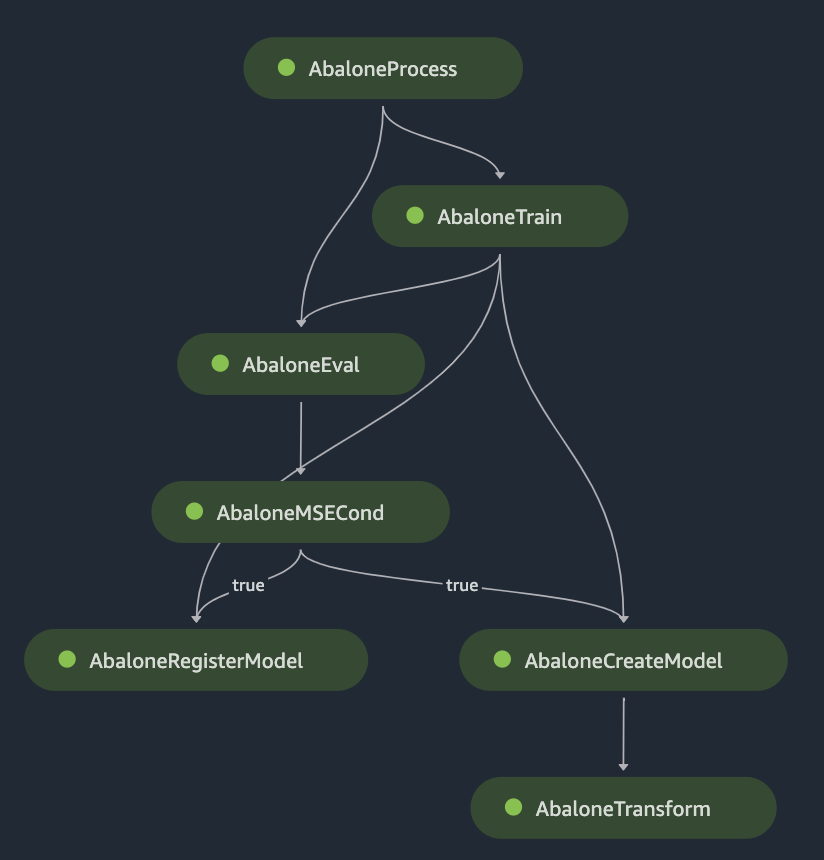Pipelines overview
An Amazon SageMaker AI pipeline is a series of interconnected steps in directed acyclic graph (DAG)
that are defined using the drag-and-drop UI or Pipelines SDK

The example DAG includes the following steps:
-
AbaloneProcess, an instance of the Processing step, runs a preprocessing script on the data used for training. For example, the script could fill in missing values, normalize numerical data, or split data into the train, validation, and test datasets. -
AbaloneTrain, an instance of the Training step, configures hyperparameters and trains a model from the preprocessed input data. -
AbaloneEval, another instance of the Processing step, evaluates the model for accuracy. This step shows an example of a data dependency—this step uses the test dataset output of theAbaloneProcess. -
AbaloneMSECondis an instance of a Condition step which, in this example, checks to make sure the mean-square-error result of model evaluation is below a certain limit. If the model does not meet the criteria, the pipeline run stops. -
The pipeline run proceeds with the following steps:
-
AbaloneRegisterModel, where SageMaker AI calls a RegisterModel step to register the model as a versioned model package group into the Amazon SageMaker Model Registry. -
AbaloneCreateModel, where SageMaker AI calls a CreateModel step to create the model in preparation for batch transform. InAbaloneTransform, SageMaker AI calls a Transform step to generate model predictions on a dataset you specify.
-
The following topics describe fundamental Pipelines concepts. For a tutorial describing the implementation of these concepts, see Pipelines actions.